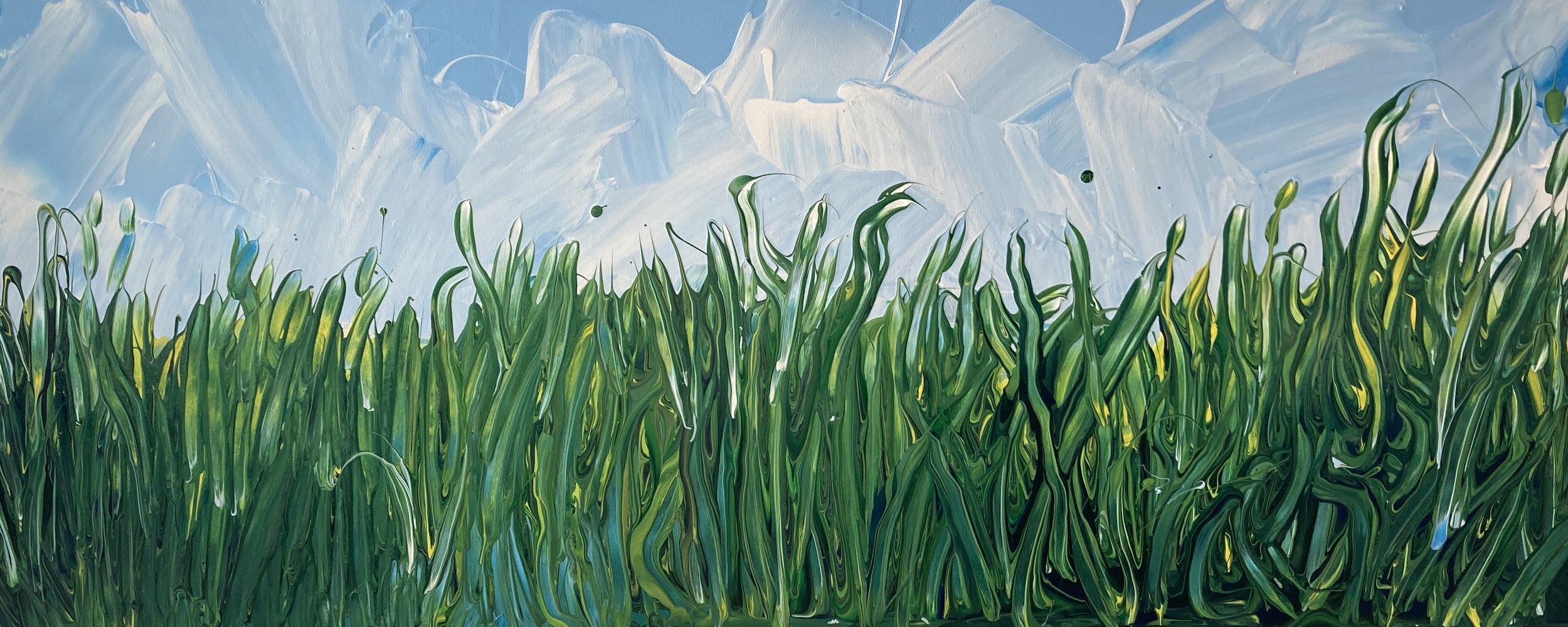
Hand-shaped Pouring
-
What is it?
Hand-shaped pouring is a technique I developed that combines acrylic pouring, finger painting, and palette-knife shaping into a single expressive process. Unlike traditional pouring methods, this approach allows for greater control and a deeper tactile connection with the canvas. The result is a layered, dynamic surface that merges the spontaneity of pour art with the intention of sculpting and texturing.
-
Preparing the paint:
Each color begins as a custom-mixed acrylic pour, thinned with a pouring medium to achieve just the right fluid consistency. I pour slowly and from low heights to preserve each tone’s clarity and prevent premature blending.
-
The pour:
I typically use a “dirty pour,” layering multiple colors— grass or earth tones—into a single cup. I then transfer the mix into a long Gutter Scoop, pouring in small circular motions to create layered patterns within the scoop before spreading the mix across the lower portion of the canvas. I pour the sky colors separately along the top edge.
-
Shaping the landscape:
I tilt the canvas to let the poured sections flow toward each other. While the paint is still fluid, I shape the lower area with my fingers to create swirling grass-like textures and use a long-blade palette knife to define the horizon and sculpt the boundary between land and sky. Timing is crucial—too early and the colors muddy; too late and they resist shaping.
-
Sculpting the sky:
With the base layers in place, I turn to the sky. Using an oversized palette knife, I add texture and directionality, with each stroke lifting and folding the paint like shifting weather patterns across the surface.
-
Drying and finishing:
Once satisfied with the composition, I let the canvas dry flat so the paint settles evenly. After several days of curing, I may return to add flowers or subtle highlights—but most of the painting is completed in that first, immersive session where instinct takes the lead.
